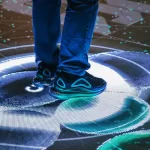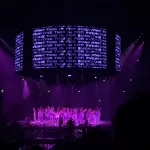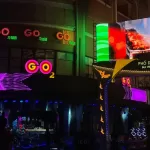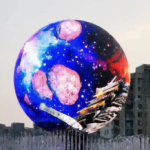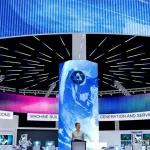In recent years, the integration of technology into performance arts has evolved significantly. Among these developments, pressure-sensing LED display systems have reshaped the landscape of modern dance stages. These intelligent floors respond to human movement with dynamic visuals, offering a new level of interactivity between performers, lighting designers, and audiences.
From Passive to Interactive: A Paradigm Shift in Stage Design
Traditional dance stages primarily relied on static lighting cues and pre-programmed visuals. However, modern audiences expect more. Therefore, the demand for responsive environments has driven the adoption of pressure-sensitive LED tiles. Unlike passive display floors, these systems detect foot pressure, movement patterns, and intensity, triggering real-time visual changes.
This transformation offers choreographers a dynamic toolset. Instead of rehearsing for lighting alignment, dancers can now activate visuals themselves. Consequently, performances feel more spontaneous and immersive, fostering deeper audience engagement.
How Pressure Sensing Technology Works in LED Displays
At the core of these systems lies a layered architecture. Beneath a durable tempered glass or polycarbonate surface, pressure sensors are embedded directly above LED modules. When a dancer steps or moves, the system records the precise location and pressure intensity.
Simultaneously, a control board interprets this data and maps it to visual responses—color shifts, image transitions, light trails, or synchronized animations. This real-time feedback enhances not only aesthetics but also performance, timing and spatial coordination.
Visual Versatility: Design Without Constraints
Because pressure-sensing LED display tiles are modular, designers can build custom configurations: square stages, circular layouts, runways, or even stair-based elevations. Additionally, each module supports millions of colors and video-level resolution, allowing high-definition animation.
For example, a contemporary dance show might feature a wave pattern that travels across the floor, following each step. Similarly, interactive storytelling can use floor visuals to mimic ripples, fire, shadows, or exploding particles, depending on the choreography.
Enhancing Choreography Through Real-Time Feedback
Performers no longer need to sync solely with pre-timed lighting cues. With responsive LED panels, dancers receive immediate feedback based on their positions and motions. This two-way interaction between dancer and stage strengthens timing precision.
Furthermore, pressure thresholds can be customized. Light taps may activate one animation, while stronger stomps trigger another. This programmable layering gives choreographers infinite creative possibilities while maintaining control.
Benefits for Event Production and Live Shows
Beyond artistic benefits, interactive LED floors improve logistics. These systems are easy to calibrate, fast to install, and support plug-and-play control through DMX, ArtNet, or proprietary software.
In live productions, producers can easily map real-time inputs from performers and combine them with other stage elements like fog, lasers, or projection mapping. In addition, mobile app or tablet integration enables directors to adjust sensitivity and content instantly.
As a result, the technology significantly reduces setup time, rehearsal complexity, and crew requirements.
Durability and Safety in High-Intensity Environments
Performance stages demand rugged construction. Pressure-sensing LED tiles used in dance applications feature IP65-rated enclosures, anti-slip coatings, and impact-resistant surfaces. Most systems can withstand over 1,000 kg/m² of pressure, making them safe even for group choreography or acrobatics.
Moreover, they support long operating hours. Advanced thermal management systems prevent overheating, ensuring consistent brightness and color fidelity during extended performances or festivals.
Key Applications Across Entertainment Venues
Today, pressure-sensing LED display floors are widely deployed across:
Theatrical dance productions
TV talent shows and music competitions
Theme parks and interactive exhibits
Art installations and museum floors
Concert stages and DJ sets
Corporate brand showcases
This flexibility demonstrates how smart LED flooring has become a cross-industry innovation. It blends digital storytelling with physical interaction in a way that traditional lighting cannot.
The Future of Responsive Stage Environments
As sensor technology evolves and artificial intelligence integrates with lighting control, LED display floors will become even more intelligent. We foresee systems that adjust brightness based on ambient light or predict dancer movement using AI-powered vision.
Additionally, wireless modules and battery-powered tiles will further increase flexibility for outdoor and pop-up events. As performance art becomes more experiential, interactive LED platforms will become indispensable in production design.
Conclusion: Pressure + Precision = Immersion
En résumé, pressure-sensing LED displays offer unmatched potential for modern stage environments. They transform traditional performance spaces into interactive canvases, empowering artists to break creative boundaries.
With their modular structure, rugged design, and advanced sensor feedback, these floors are not just a trend, but a long-term shift in stage design philosophy.
For any production company, venue manager, or creative director looking to elevate audience engagement and visual storytelling, integrating pressure-sensitive LED display floors is the next logical step.

